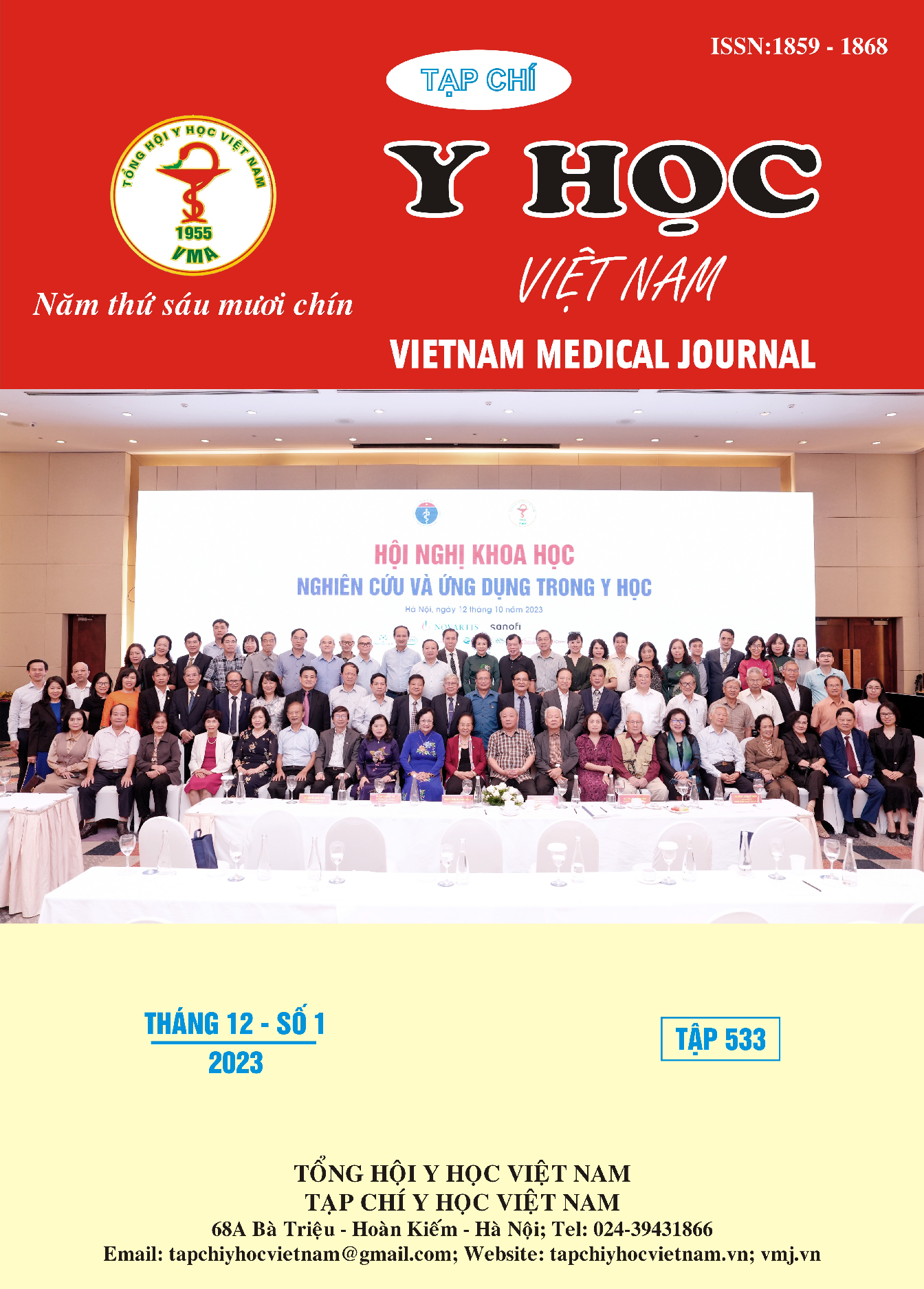ĐẶC ĐIỂM HÌNH ẢNH CỘNG HƯỞNG TỪ U BÁN CẦU ĐẠI NÃO TRÊN LỀU ĐƯỢC SINH THIẾT NÃO TẠI BỆNH VIỆN QUÂN Y 103
Nội dung chính của bài viết
Tóm tắt
Mục tiêu: Mô tả đặc điểm hình ảnh cộng hưởng từ u bán cầu đại não trên lều được sinh thiết não tại bệnh viện Quân Y 103. Đối tượng và phương pháp: Nghiên cứu được thực hiện trên 30 bệnh nhân được chẩn đoán u bán cầu đại não trên lều tại khoa Phẫu thuật thần kinh- Bệnh viện Quân y 103 từ tháng 1/2020 đến tháng 12/2022. Đánh giá đặc điểm lâm của khối u não trên cộng hưởng từ. Kết quả: Hình ảnh cộng hưởng từ biểu hiện chủ yếu là giảm tín hiệu trên T1 (56.7%), tăng tín hiệu trên T2 (86.7%), có ngấm thuốc sau tiêm (90%), tất cả đề có phù não quanh khối u (100%), đè đẩy đường giữa ở mức độ nhẹ chủ yếu là độ I (60%). Vị trí khối u chiếm tỷ lệ cao nhất ở thùy trán (23.3%), sau đó thái dương (20%), ở vùng não sâu (20%). Tỉ lệ đa ổ, đa vị trí chiếm tỉ lệ cao 23.3.%. Kích thước khối u trung bình là 41.7 ± 18.4 mm. Kết luận: Hình ảnh cộng hưởng từ của u bán cầu đại não trên lều thường biểu hiện chủ yếu giảm tín hiệu trên T1, tăng tín hiệu trên T2, có ngấm thuốc sau tiêm, phù não quanh u và có đè đẩy đường giữa mức độ nhẹ.
Chi tiết bài viết
Tài liệu tham khảo
2. D. N. Louis, A. Perry, G. Reifenberger, et al. (2016). The 2016 World Health Organization Classification of Tumors of the Central Nervous System: a summary. Acta Neuropathol, 131(6): 803-20.
3. J. S. Guillamo, A. Monjour, L. Taillandier, et al. (2001). Brainstem gliomas in adults: prognostic factors and classification. Brain, 124(Pt 12): 2528-39.
4. Udalrich Büll Gianni B. Bradač, Rudolf Fahlbusch, Thomas Grumme, E. Kazner, Konrad Kretzschmar, Wolfgang Lanksch, Wolfang Meese, Johannes Schramm, Harald Steinhoff (1981), Computed tomography intracranial tumors: differential diagnosis and clinical aspects,Berlin Springer -Verlag: 27-28.
5. M. K. Demir, T. Hakan, G. Kilicoglu, et al. (2007). Bacterial brain abscesses: prognostic value of an imaging severity index. Clin Radiol, 62(6): 564-72.
6. T. Sciortino, B. Fernandes, M. Conti Nibali, et al. (2019). Frameless stereotactic biopsy for precision neurosurgery: diagnostic value, safety, and accuracy. Acta Neurochir (Wien), 161(5): 967-974.
7. C. Taweesomboonyat, T. Tunthanathip, S. Sae-Heng, et al. (2019). Diagnostic Yield and Complication of Frameless Stereotactic Brain Biopsy. J Neurosci Rural Pract, 10(1): 78-84.


